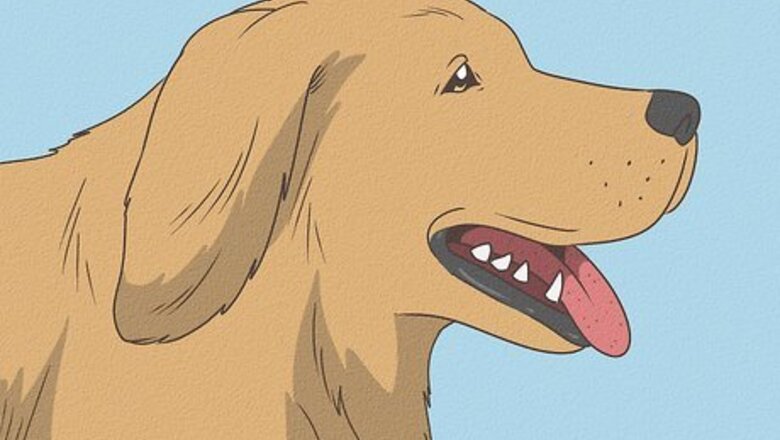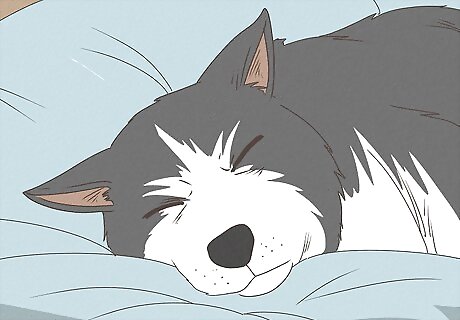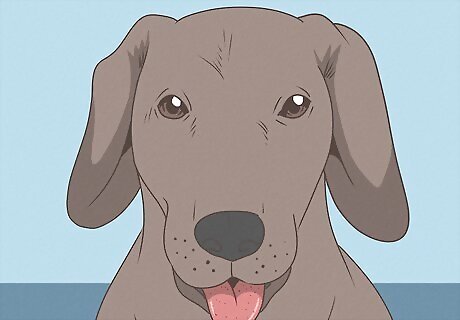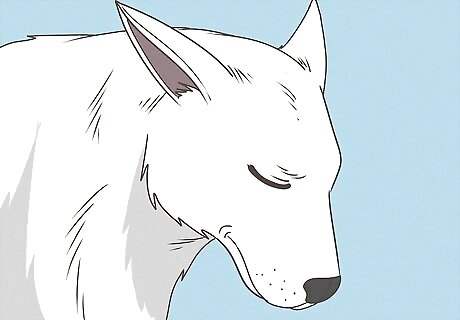
views
- Dogs put their ears back to signal many different feelings, including happiness, nervousness, aggression, stress, and even physical pain.
- Pay attention to a dog’s full body language. For example, a dog might bow when it’s happy but bark when it’s angry, with ears back in both cases.
- Ask a dog’s owner before approaching an unfamiliar dog. If the owner says yes and their dog seems relaxed, the dog is more likely to enjoy your attention.
- Give dogs space if they seem nervous, anxious, or aggressive. Dogs may bite to defend themselves if they feel threatened or scared.
Your dog is happy and relaxed.

Happy dogs will let their ears drop or go soft. As their bodies relax, they might blink, sniff, or walk around calmly. They won’t be jumpy or hyper, but they’ll wag their tail and happily accept pets, treats, and belly rubs. They might even fall asleep if they’re older or had a busy, active day. Happy and relaxed dogs are usually safe to approach, but always check with the owner if it’s a dog you’re not familiar with.
Your dog is anxious or stressed.

An anxious pup might lower its tail, look down, and put its ears back. They might also lean back or turn away from you, in the same way that humans might look down or frown when we’re uncomfortable. If your dog is anxious or stressed, avoid petting them unless they come to you first. Give them space or take them out of the environment that’s stressing them out. An anxious dog might become aggressive if they get scared. Give them time to relax and don’t overwhelm them with attention until they calm down. It’s normal for dogs to feel anxious at the veterinarian’s office or in other locations they associate with being uncomfortable. You should not look at one part of a dog to make a judgment if it's stressed or not. You should take into consideration the context, the environment, the entire situation to make an observation.
Your pup wants to play.

A playful dog will “bow” its body, wag its tail, and put its ears back. This is sometimes called the “play bow” and it happens when your dog is excited and happy. They’ll probably want to play fetch, run around, or just act like an adorable goofball. A playful dog might also bark, bounce around, and salivate happily. Play with them by throwing a ball or frisbee, or by running around the house together.
Your dog is being friendly.

A friendly dog will put their ears back as they approach you. This makes them appear smaller, friendlier, and less intimidating. They’ll probably lick, sniff, wag their tail, and look up at you too. Depending on the dog, it might be safe to pet or play with them, but be gentle—especially if you’re meeting them for the first time. If a friendly dog approaches you, but it’s not your dog, ask the owner if the dog likes to be petted. It’s always safer to get permission than to assume that a dog wants to be touched.
Your pup feels threatened.

If a dog feels threatened, it’ll put its ears back, bark, and growl. In this case, putting their ears back is an instinctive response to keep their ears safe from another dog’s bite. They might drop their body down and bear their teeth. If a dog behaves this way, don’t approach or pet them. Back away and give them plenty of space. A dog might become aggressive if it feels threatened. Avoid getting close to them, especially if they’re barking at you directly.
Your dog is not feeling well.

A dog might turn its ears back when they’re in pain or feeling sick. Loud noises, especially high-frequency sounds that humans can’t hear, can hurt a dog’s ears. Ear infections, body aches, or an upset stomach can all cause discomfort too. If your dog’s ears are back and they seem more tired or withdrawn than usual, it could be a sign that they’re not feeling well. When possible, take your dog to a veterinarian to see if there’s anything you can do to help them feel better.
Your dog is being aggressive.

An aggressive dog might pull its ears back, lunge, and even bite. As when a dog feels threatened, an aggressive dog will instinctively put its ears back to protect them from getting bitten by other dogs. If you encounter an aggressive dog, calm them down by standing very still and avoiding eye contact. Running away increases the chances of getting bitten. If it’s not your dog, ask the owner for help since it’s safer for a familiar person to approach an aggressive dog.
Your dog wants your attention.

Dogs use “puppy eyes” with ears back to tell you they want something. This makes them look sweet, vulnerable, and non-threatening. They could be hungry for dinner or just curious about that sandwich you’re eating. They could also just need a walk or help getting a toy from under the couch. Dogs will also whine and cry when they want attention.
Your dog thinks you’re upset with them.

A dog with a “guilty” look will put its ears back. They might tuck their tail between their legs and give you “puppy eyes” too. While they don’t necessarily feel “guilt” the way humans do, they know when they’ve done something to upset you—like peeing on the rug or using your slipper as a chew toy. They’re responding to your body language and tone by giving you an anxious, non-threatening look. If your dog does something wrong, experts recommend avoiding punishments like yelling or displays of anger, since it can lead to increased anxiety and aggression in dogs. Instead of punishing dogs for bad behavior, try encouraging good behavior by rewarding them with treats, pets, and attention when they do things correctly.
Your pup is listening to something.

Dogs lift their heads and swivel their ears to hear things better. If the sound is behind them, they might move their ears back. Unlike human ears, dog ears have at least 18 muscles that allow them to swivel their ears in many different directions. This helps them determine a sound’s exact location and distance. If your dog swivels one or both of its ears back, they might be listening to noises coming from behind them.
Your dog is flirting with another dog.

Male dogs put their ears back and slowly tiptoe towards a female when courting. Likewise, female dogs might respond by putting their ears back too. Both female and male dogs do this to make themselves appear smaller and less threatening, which makes them seem more approachable. Dogs have complicated courtship rituals. For instance, a female dog might put her ears back to avoid appearing confrontational, but that doesn’t automatically mean that she’ll accept a male dog’s advances.
Your dog likes the way you're petting them..

A happy dog will put their ears back and wag their tails as you pet them. They might turn over to let you rub their belly or press up against you in a kind of “dog hug.” In other words, they’re saying “Keep petting me, please!” Dogs also roll over when being submissive to other dogs. When this happens, dogs might nervously put their ears back and tuck their tails between their legs.

















Comments
0 comment